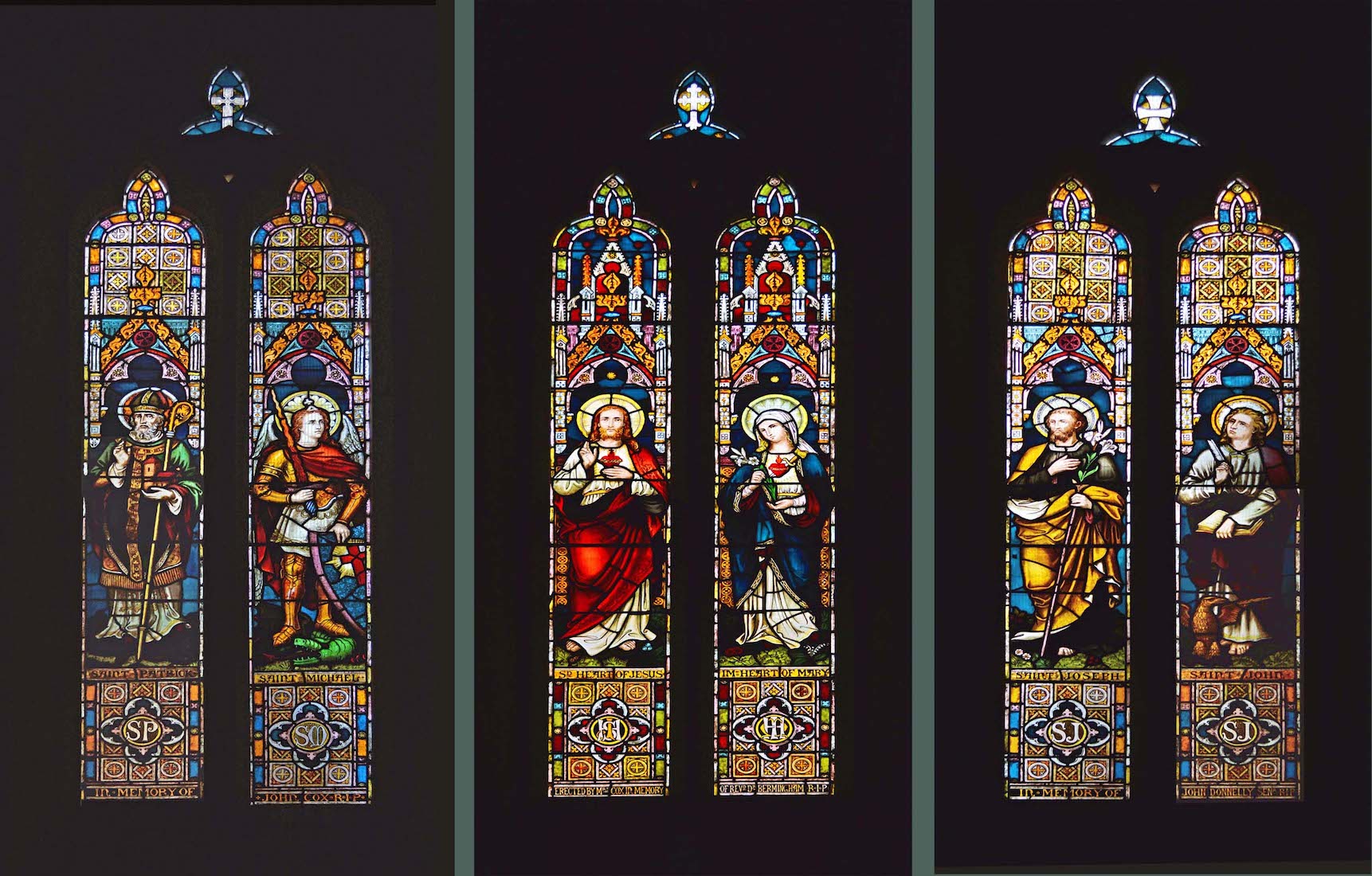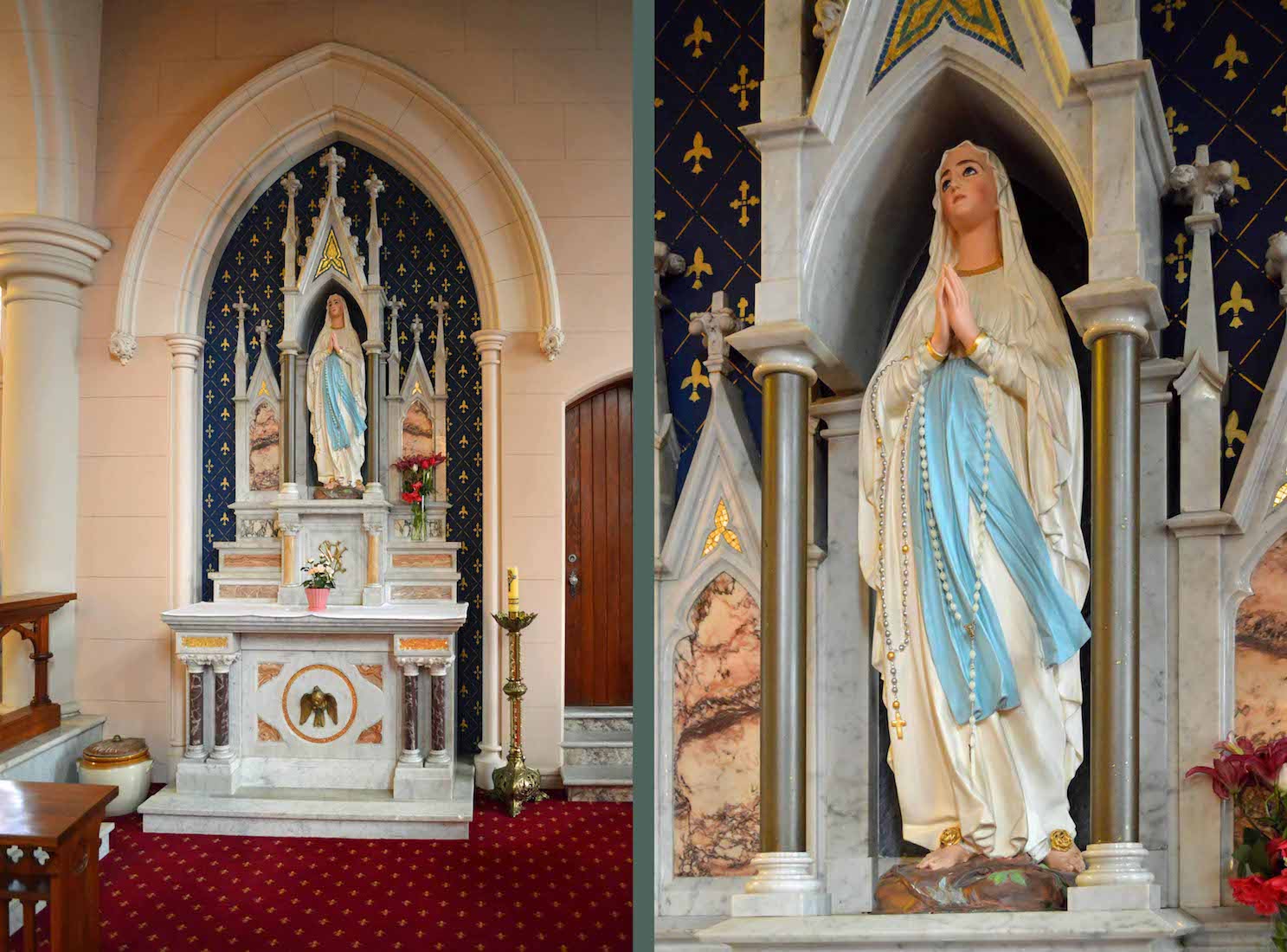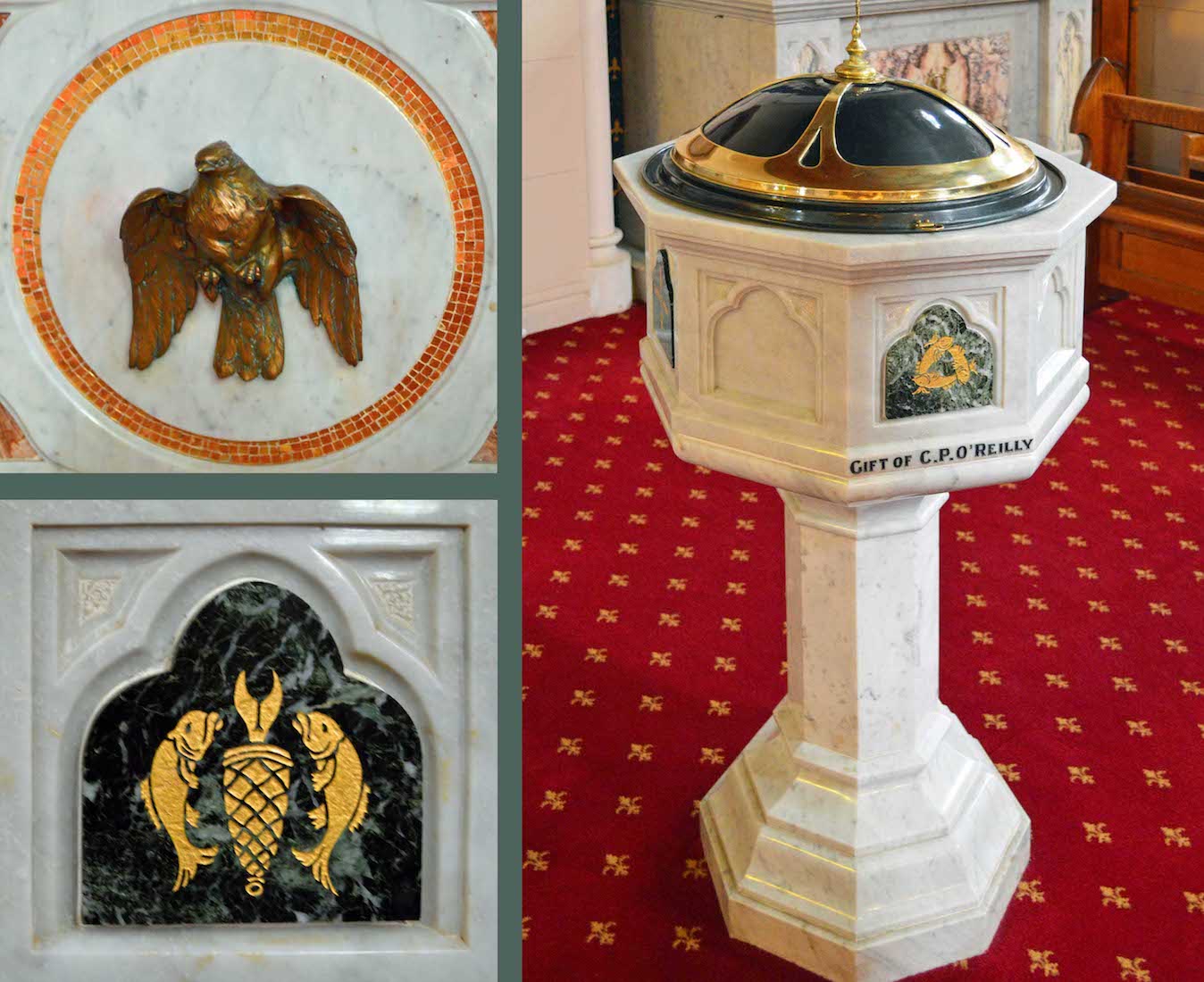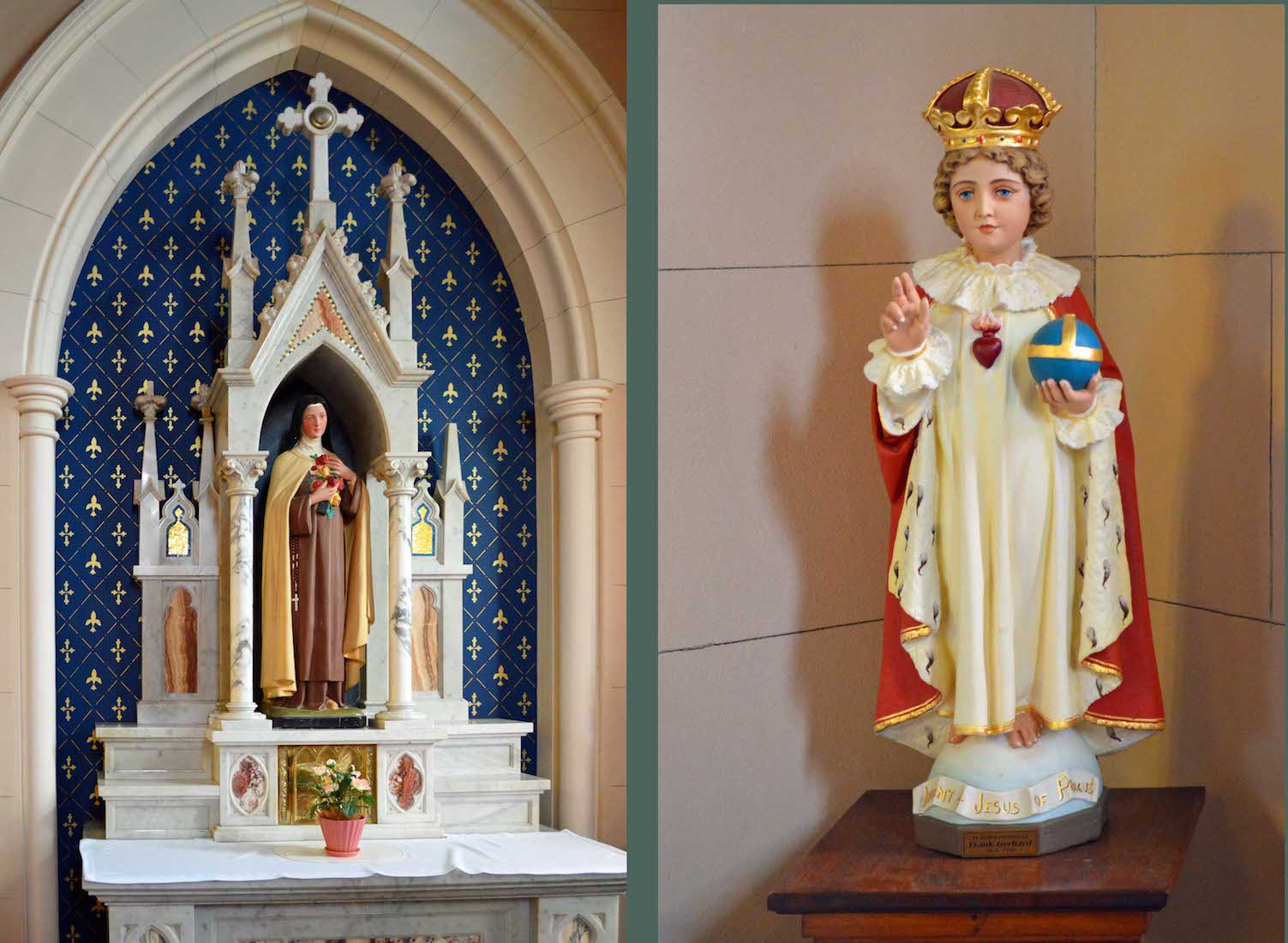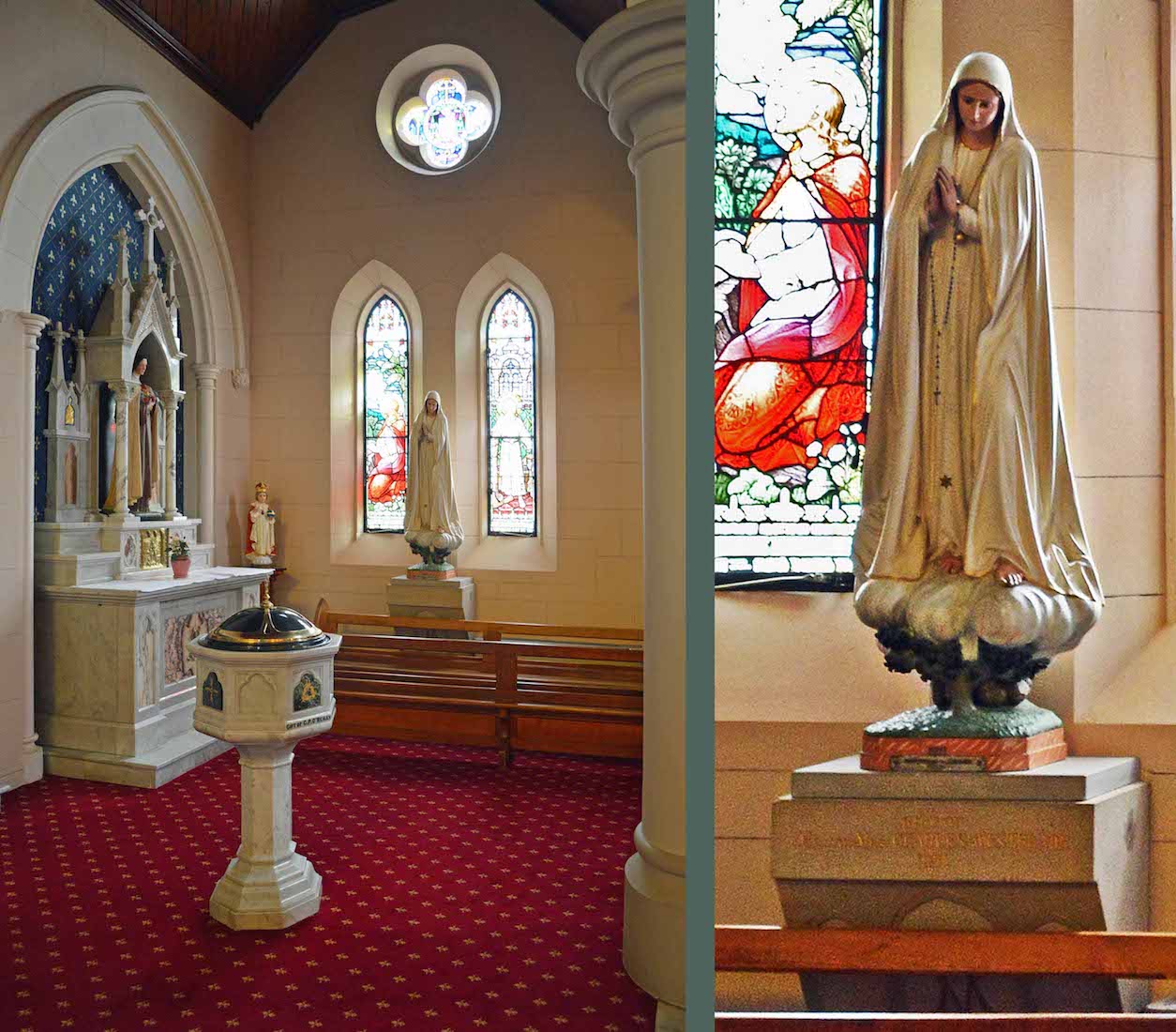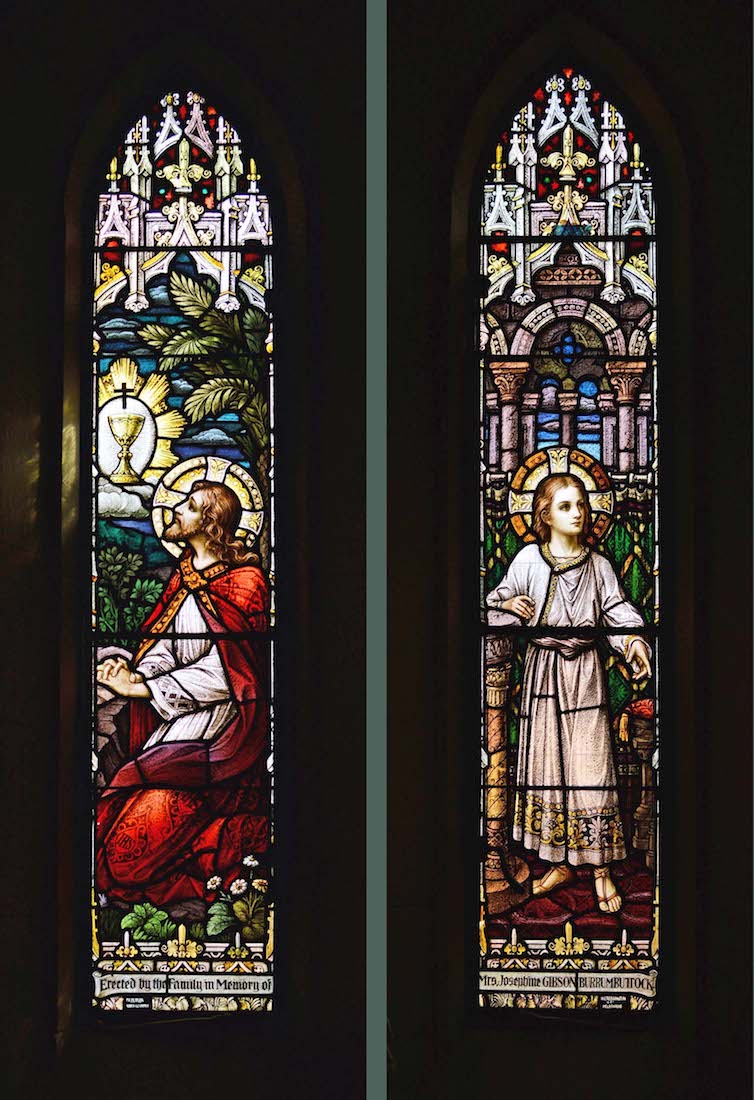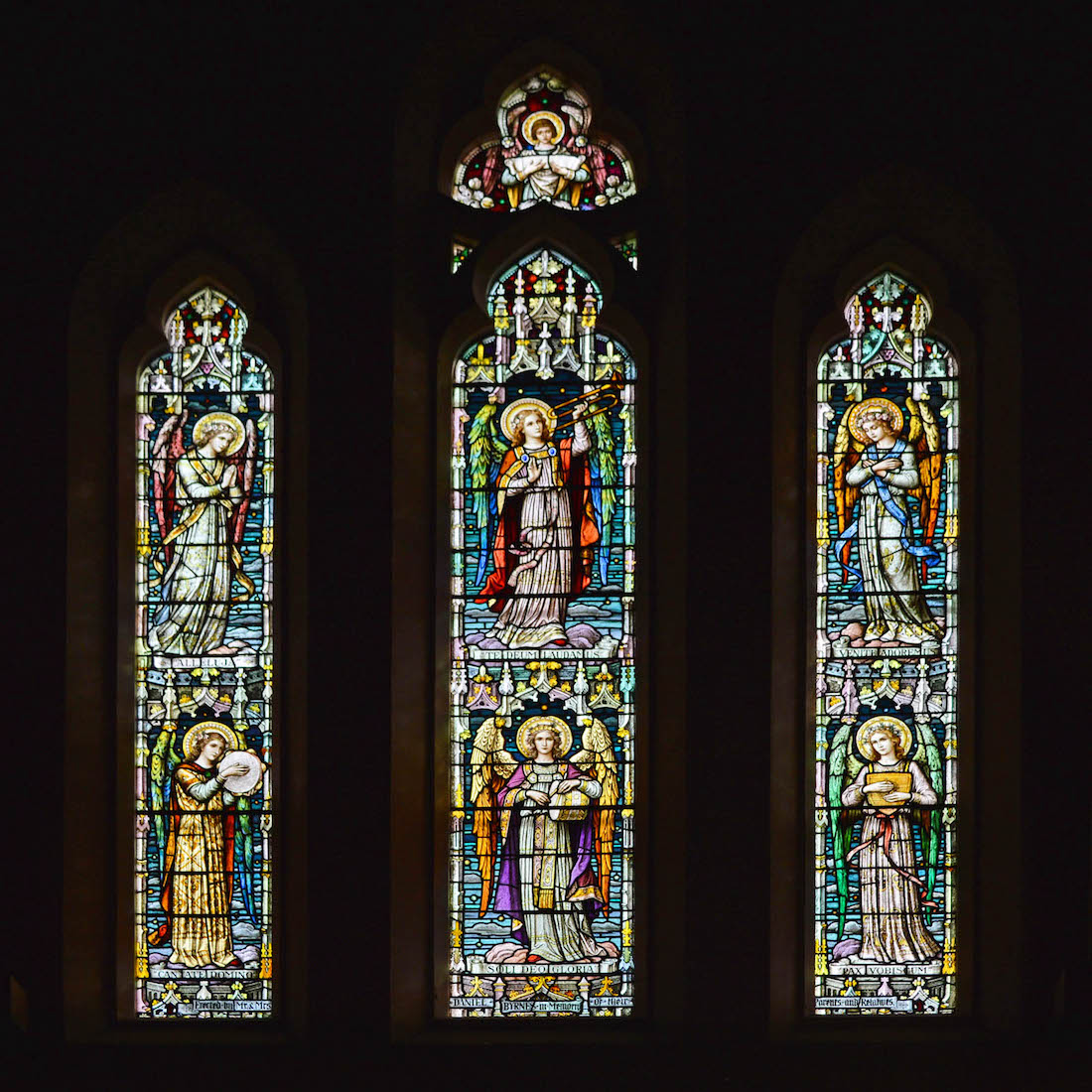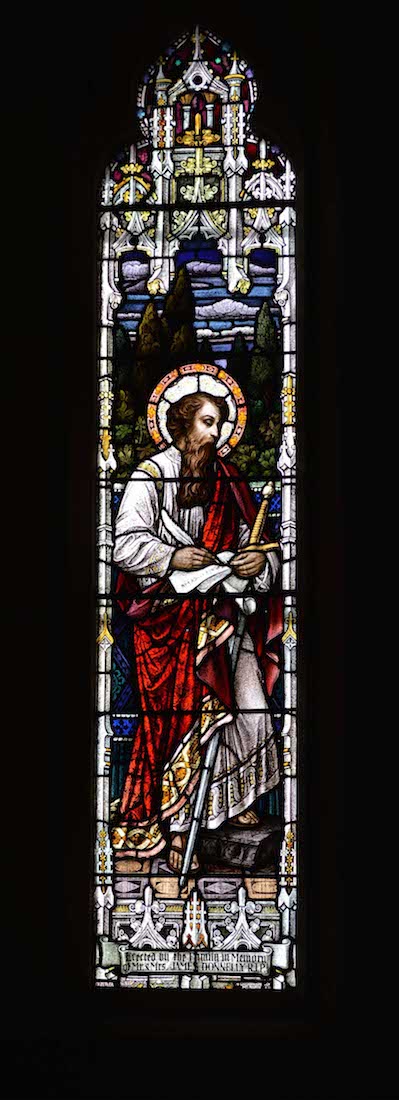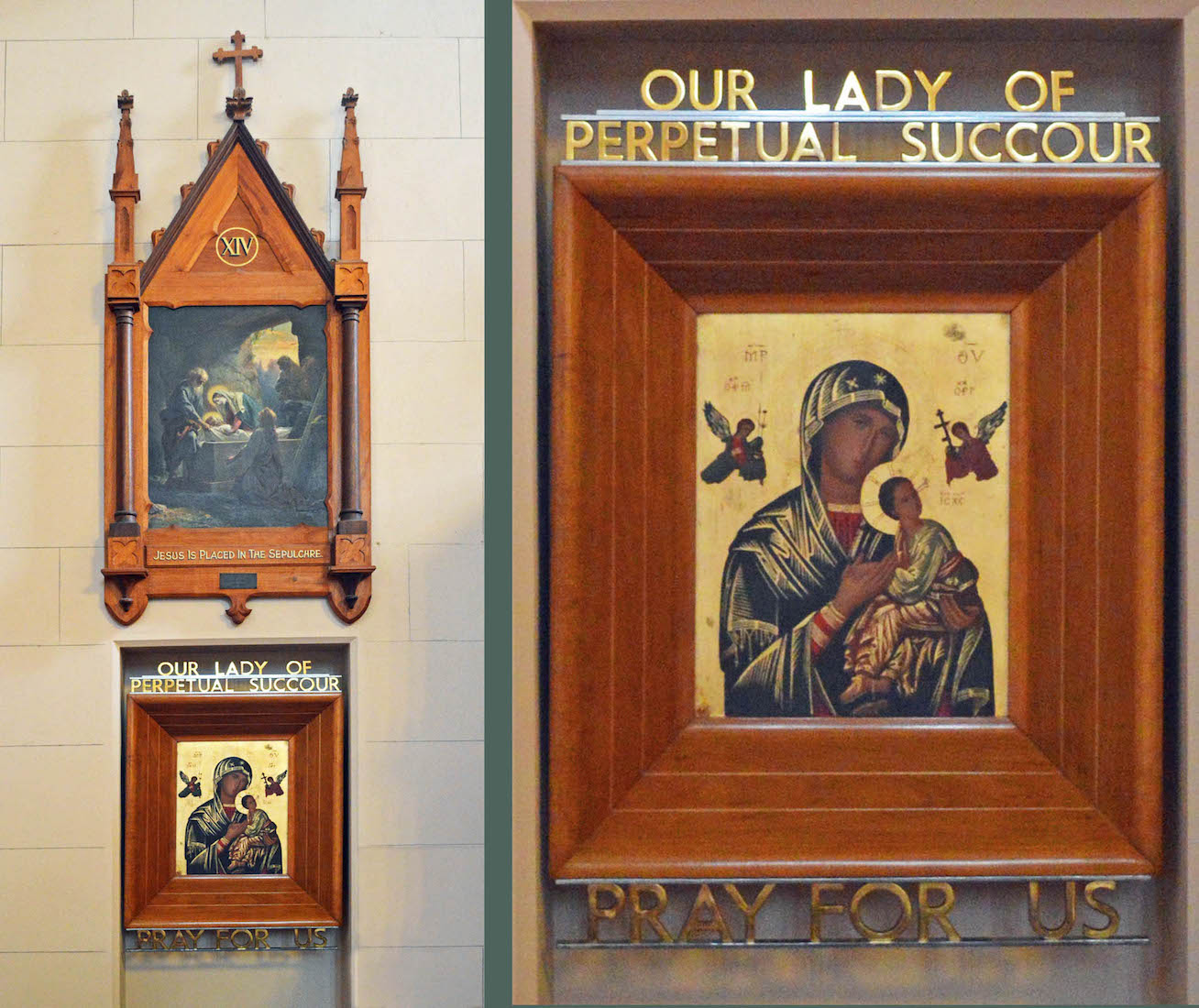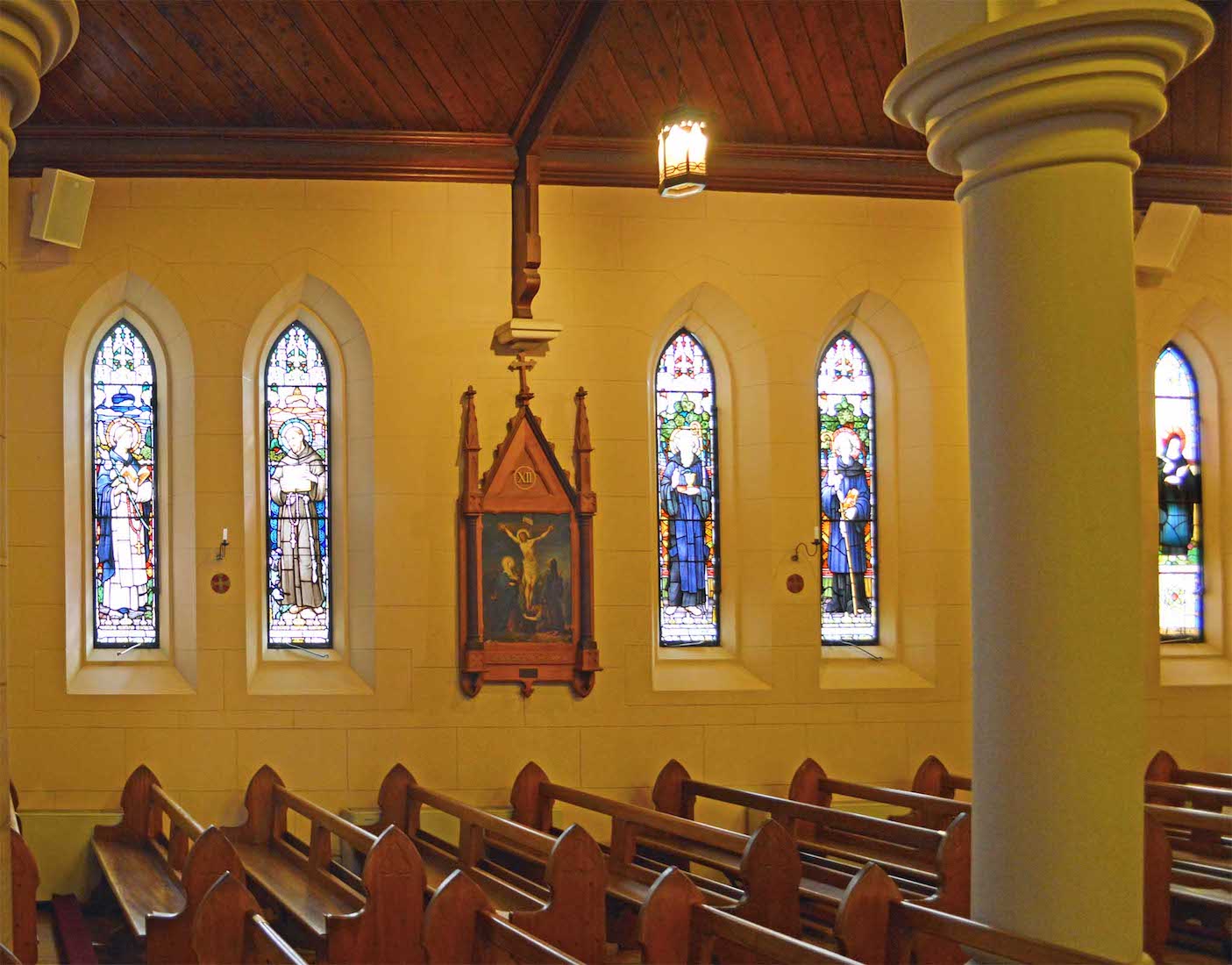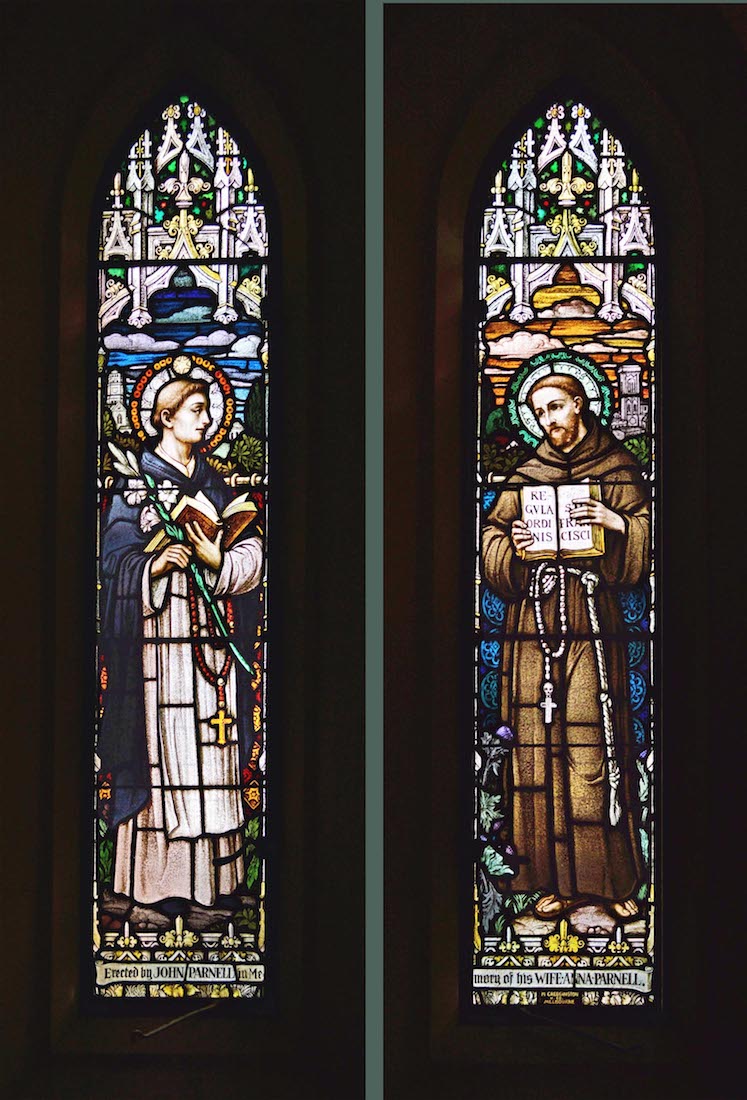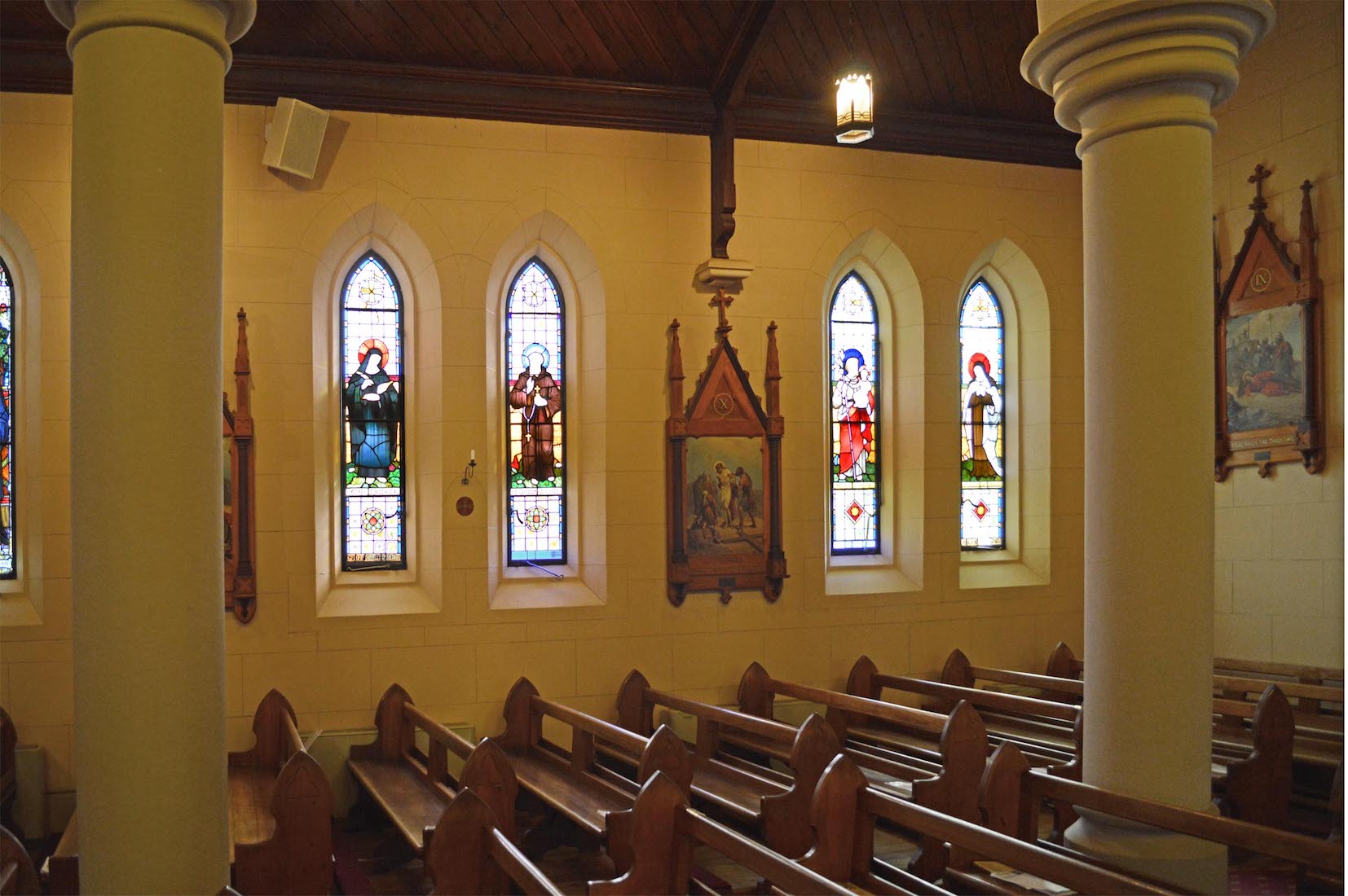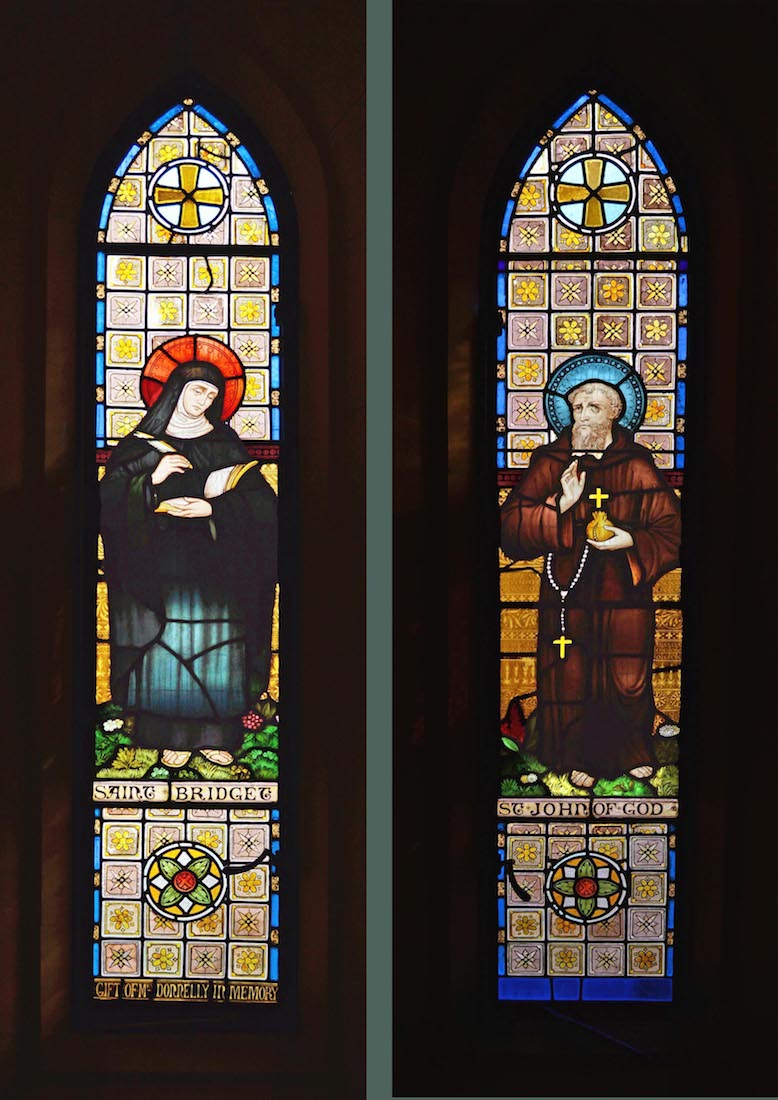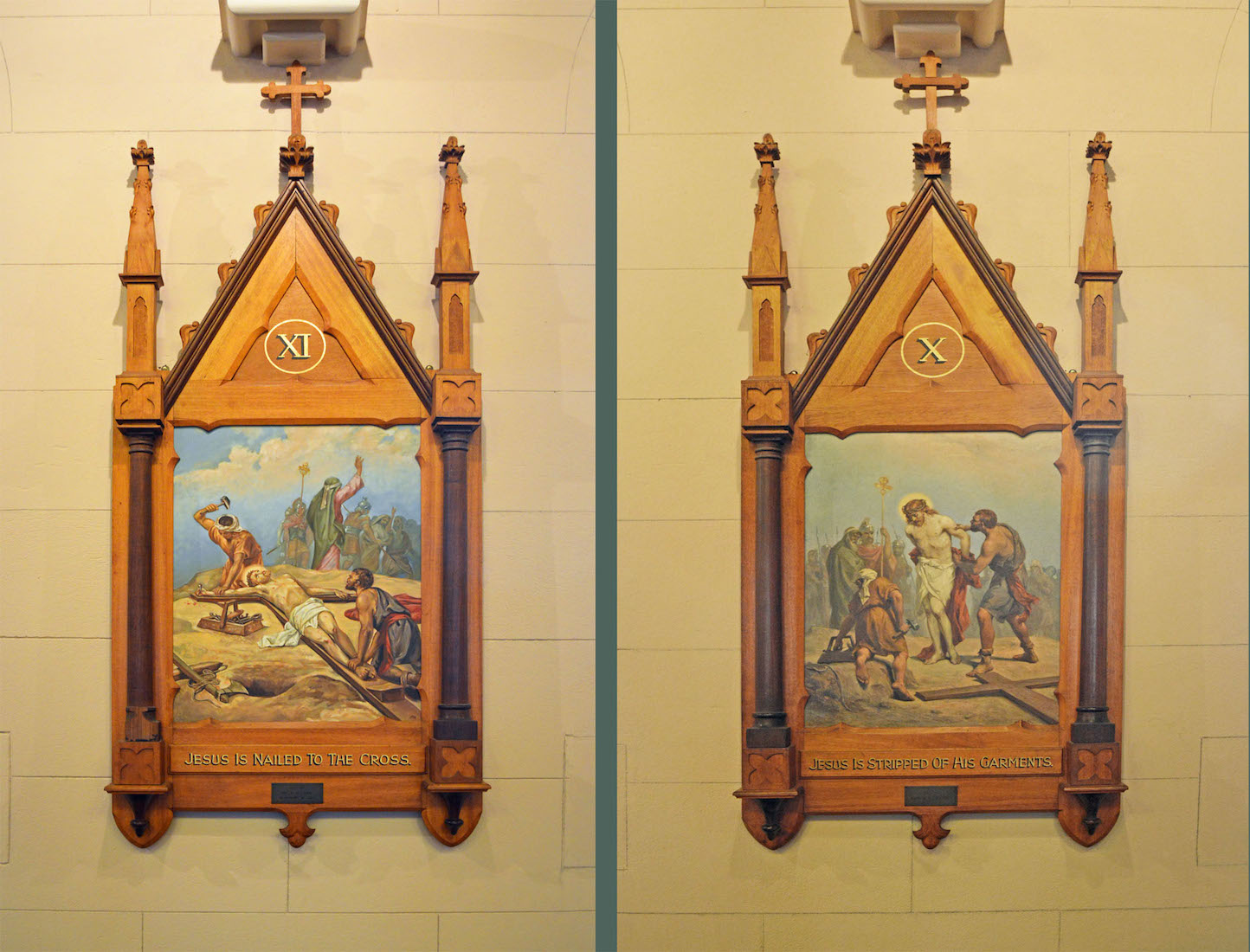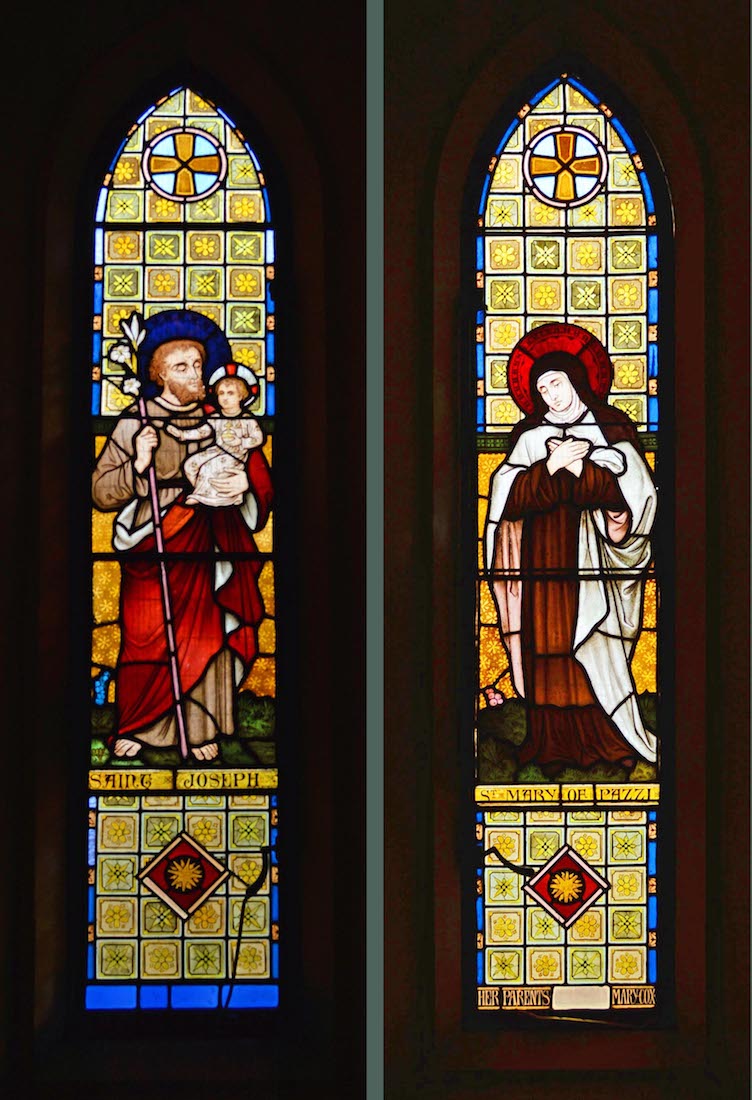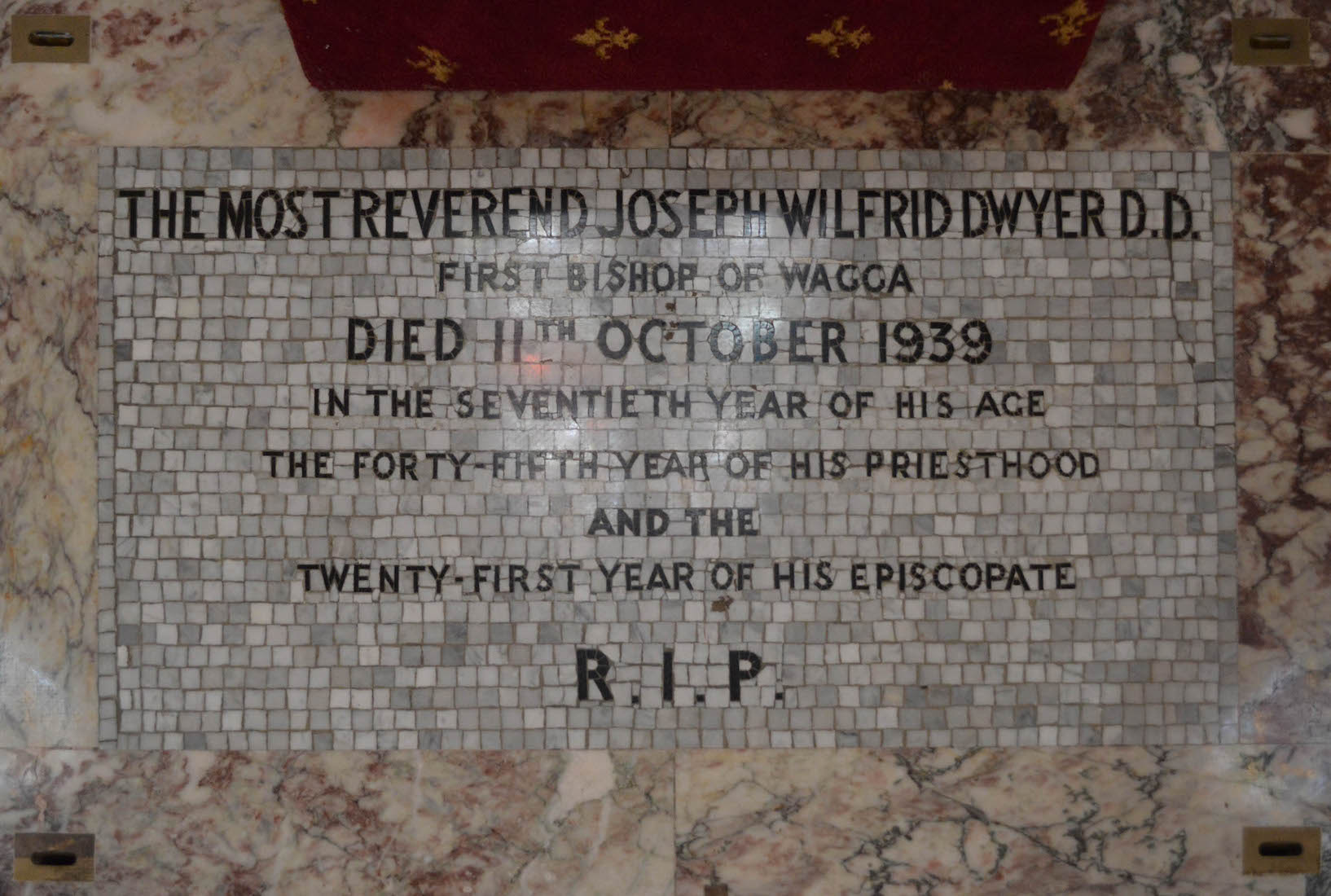
At the foot of the cathedra is a mosaic plaque which reads: ‘The Most Reverend Joseph Wilfrid Dwyer D.D., First Bishop of Wagga, died 11th October 1939 in the seventieth year of his age, the forty-fifth year of his priesthood and the twenty-first year of his episcopate. R.I.P.’ INDEX
42. CATHEDRA
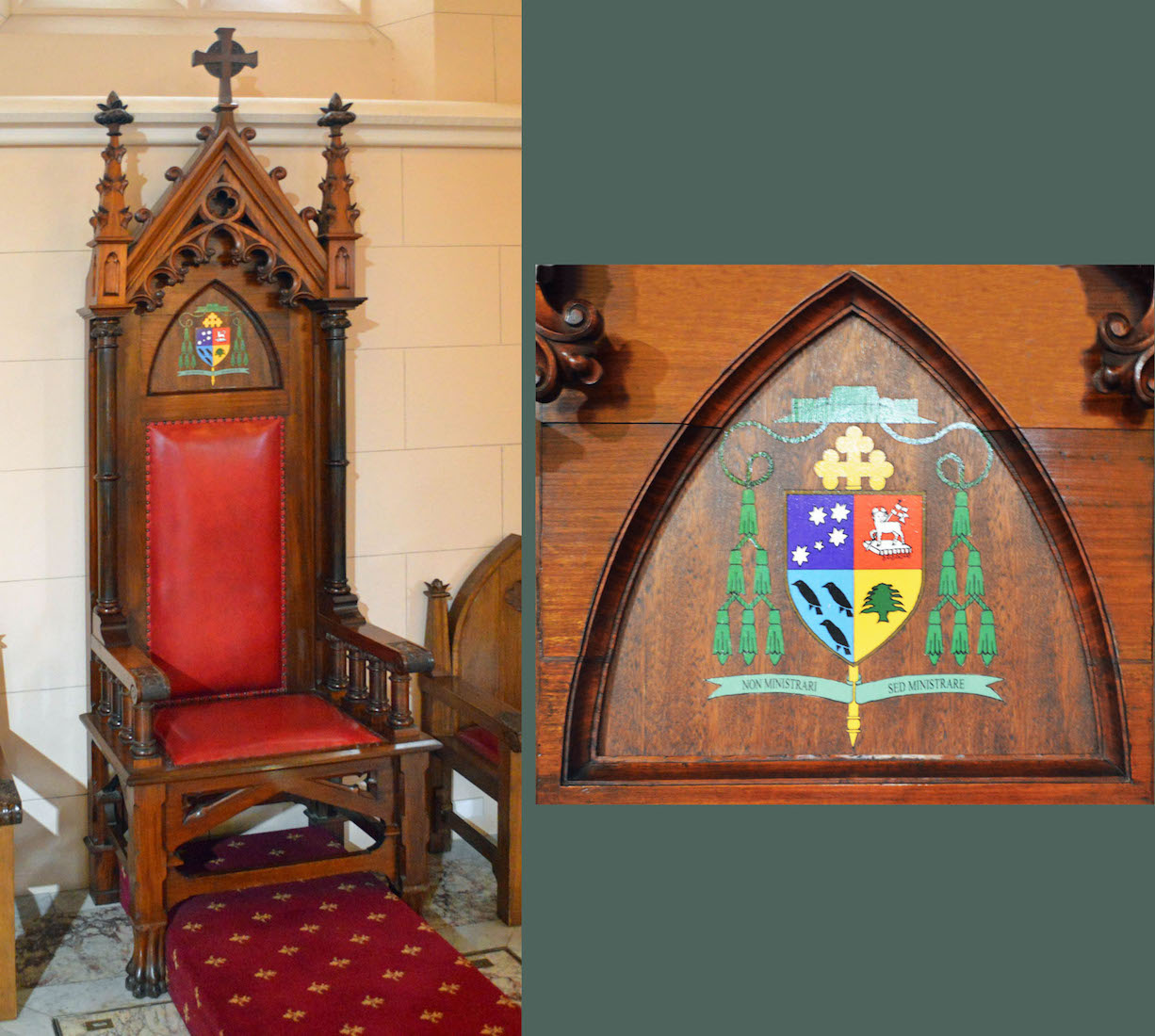
The Bishop’s chair or throne, is called a cathedra (from the Latin). This Church is a Cathedral because the Bishop’s throne is sited here. The coat of arms on the back of the cathedra is presumably that of the current Bishop. At left are the Diocesan symbols, and underneath, the words ‘Non ministrari • sed ministrare’, meaning ‘Not to be ministered unto, but to minister’.
43. SANCTUARY WINDOWS
The Eastern wall contains three interesting pairs of lancet windows. At left we have portrayed St Patrick and St Michael. St Patrick is holding a model of the Armagh Church, the first erected in Ireland. The central pair depict Christ and St Mary with the inscriptions: ‘the S(acre)d Heart of Jesus’ and ‘The Im(maculate) Heart of Mary’. At right we see St Joseph and St John. St Joseph is carrying a sprig of lilies, and an eagle sits at the feet of St John.
44. LAMP AND ROOD
The attractive sanctuary lamp hangs in the Chapel of the Blessed Sacrament. The light burns continuously, symbolizing the eternal presence of God. The rood, or rood cross, is a life-sized crucifix displayed on the central axis of a church, normally at the chancel arch.
46. OUR LADY SHRINE
On the left side of the Lady Chapel is this shrine to Our Lady, showing Mary in devout prayer. Historically there are records from around 1208 of a vision of Mary as ‘Our Lady of the Rosary’.
47. BAPTISMAL FONT
Unusually, a baptismal font stands in the Lady Chapel. This is made of white marble with attractive green and gold inserts. It was the gift of C. P. O’Reilly. The golden dove is at the base of the shrine at left.
48. ST THÉRÈSE SHRINE
Saint Thérèse of Lisieux (1873 – 1897) was a French Discalced Carmelite nun. She is popularly known as ‘The Little Flower of Jesus’ or simply, ‘The Little Flower’. Thérèse has been a highly influential model of sanctity for Roman Catholics and for others because of the simplicity and practicality of her approach to the spiritual life. A statue in the corner portrays Christ as a little King.
49. LADY CHAPEL – SOUTH VIEW
This view of the Lady Chapel towards the South shows the South windows and another statue of St Mary in prayer.
50. LADY CHAPEL WINDOWS
The lancet windows show Jesus at prayer in the Garden of Gethsemane at left, and at right, the boy Jesus teaching in the Temple. The windows were ‘erected by the family in memory of Mrs Josephine GIBSON • (of) BURRUMBUTROCK’. and made by H. C. Reddington of Melbourne.
51. SOUTH TRANSEPT WINDOWS
These windows of angels playing old musical instruments form a pair with the North transept windows. There are just four instruments here: trombone, castanets, small drum, and ‘percussion shield’. The windows were given by Mr & Mrs Daniel BYRNES in memory of their parents.
52. SOUTH TRANSEPT WEST WINDOW
This West window was erected by the family in memory of Mr & Mrs JAMES DONNELLY R.I.P. The subject is not named, but is perhaps St Paul, with his sword, and writing materials.
53. OUR LADY OF PERPETUAL SUCCOUR
In the South transept and below the Station of the Cross XIV is the icon ‘Our Lady of Perpetual Succour’. This name is a Roman Catholic title of the Blessed Virgin Mary given by Pope Pius IX. It is associated with a celebrated Byzantine icon of the same name dating from the 15th century. The esteemed icon has been in Rome since 1499, and is permanently enshrined in the church of Sant'Alfonso di Liguori.
54. SOUTH NAVE EAST
We leave the South transept, and continue to investigate the South wall of the nave. Again, there are pairs of stained glass windows interspersed with Stations of the Cross.
55. SOUTH NAVE WINDOWS I
This pair of windows was erected by JOHN PARNELL in memory of his wife ANNA PARNELL. I do not know who is pictured here.
56. SOUTH NAVE WINDOWS II
The second pair of windows were erected in memory of MARY McDONOUGH. The characters pictured carry pastoral staffs.
57. SOUTH NAVE WEST
We continue our exploration of the South nave wall, walking towards the West. There are two more pairs of windows separated by a Station of the Cross.
58. SOUTH NAVE WINDOWS III
The Saints pictured here are St Bridget and St John of God. The windows were a gift of Mrs DONNELLY. St Bridget was an early Irish Christian nun, abbess, and founder of several monasteries of nuns, including that of Kildare in Ireland, which was considered legendary and was highly revered. St John of God was a health-care worker in Spain, whose followers later formed the Brothers Hospitallers of St. John of God, a worldwide Catholic religious institute dedicated to the care of the poor sick and those suffering from mental disorders.
59. STATIONS OF THE CROSS XI, X
These two Stations of the Cross on the South wall show Jesus being stripped of his garments and nailed to the Cross.
60. SOUTH NAVE WINDOWS IV
The final pair of windows on the South wall of the nave show St Joseph and St Mary of Pazzi. St Joseph, with his sprig of lilies, is well known as the husband of the Virgin Mary. St Mary Magdalene of Pazzi, 1566 – 1607, was an Italian Carmelite mystic, given to raptures and ecstatic visions.


